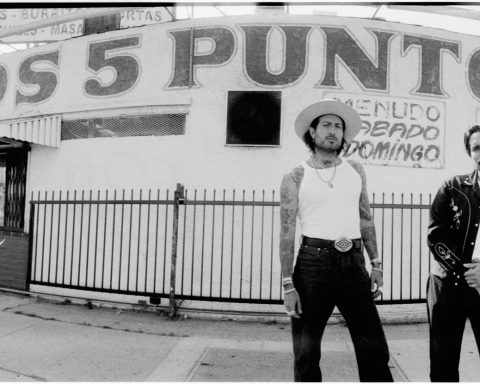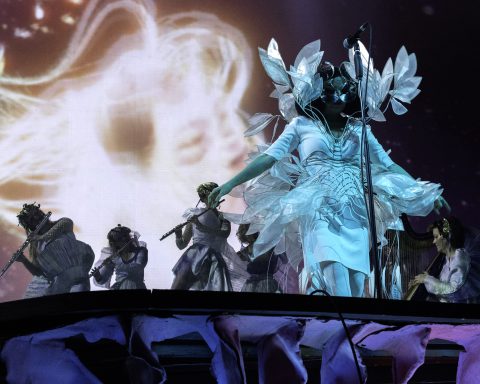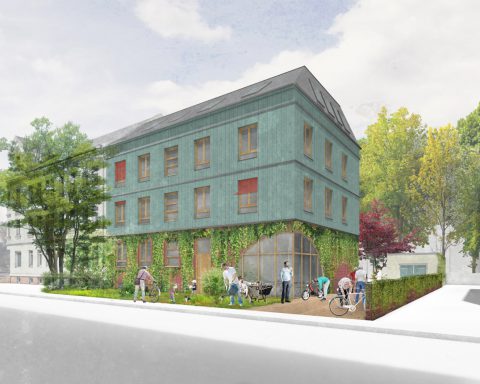
Brazil is usually known for its beaches, parties, carnival, and nature, but not so much for its arts, design and cultural life. It might be easier for tourist guides, travel blogs and unimaginative tourists to rely on this well-constructed stereotype. Maybe that explains why so few people happen to know the place where I grew up. For those thinking that I will now start writing about a small mysterious village in the middle of nowhere in Brazil, I am sorry to disappoint you.
Belo Horizonte (or “beautiful horizon” in English), as my city is called, is actually the third largest city in the country. Lacking Rio’s beaches or São Paulo’s economic hype, Belo Horizonte remains still somehow unknown and neglected to the “other places to see” pages of tourist guides. This discreet and unpretentious charm away from the highly touristy and buzzing streets of the main touristic spots makes it even more attractive and interesting.
Beagá, as it is called by the locals, is located in the southeast of Brazil, more precisely in Minas Gerais, the part of Brazil known for its hilly landscape, mining industry, cachaça (Brazilian sugar cane alcohol used to make caipirinhas) and its very singular accent, a particular variation of the Brazilian Portuguese (people from Minas Gerais have the tendency to shorten every word and love to use the diminutive form of everything. The word “trem” can also replace any term you forgot or are not familiar with, which can be very useful for foreigners. Warning: be prepared to be made fun of if you use this word anywhere else but in Minas).
Known for its high amount of bars, Belo Horizonte has been named “the bar capital of Brazil” and some claim it may even have the most bars per capita in the world.
For this reason, growing up in the city has seriously damaged my criteria of fun and idea of sightseeing. Why bother with stressful travel plans and exploring crowded tourist spots if you can learn so much about any city and its culture by sitting somewhere for a spontaneous beer? In any case, I have to admit that I never found Belo Horizonte the most exciting place in the word, one of the main reasons why I left, but things have been slowly changing for the better through the years. Belo Horizonte is experiencing this very particular moment in a city’s trajectory when it has just the right kind of vibe before it becomes overrated.
-

Belo Horizonte’s Museum of Fine Arts, designed by the legendary Oscar Niemeyer, the architect who designed Brasília. Photo credit: Patrícia Rezende.
Although the current climate in Brazil is one of pessimism and mistrust (we’ve been “the country of the future” for quite some years now and the future never really happened), I dare to diverge. In my humble, expatriate opinion, the winds of change are slowly blowing away persistent negative historical traits (farewell patriarchy and sexism) and bringing in positive and encouraging changes.
When I left Belo Horizonte many years ago, there was a movement of young people moving to Berlin.
Berlin was the promised land of freedom and creativity, the sexy city in Europe where people were still able to survive with a terrible exchange rate and poor German skills. Recently, the migratory wave slowed down—maybe Berlin became too mainstream, or maybe the economic crisis forced people to have more realistic dreams. Belo Horizonte turned into the promised land instead. So people grew beards, dedicated themselves to artistic endeavors, gave up on their jobs (or lost them, realistically speaking) and decided to start their own businesses. Belo Horizonte became home to charming small art galleries and a flourishing startup scene, also known as San Pedro Valley, which shook things up in the business realm of my old city. So if you have been gentrified out of Berlin or Leipzig is already too cool, that might be a feasible option.
-

Pampulha lake at dawn, Belo Horizonte. Photo credit: Patrícia Rezende.
Changes have also taken place in the way people connect to the city. In contrast with European parks, squares and green areas, public spaces in Brazil have been authority-controlled areas segregated from the masses and often serving very specific groups.
However, in the past few years, Belo Horizonte has experienced a movement of activists and artists trying to occupy, redefine and reconnect to the public spaces.
The rebirth of its street carnival with self-organized neighborhood parties and local bands formed by non-professional musicians is a good example of this recent trend. During the year, several groups organize musical instrument-making workshops and music lessons, so people can not only attend but also actively take part in the festivities.
The main square of the city, originally occupied by government bureaucratic spaces, became a cultural area with the buildings serving now as museums dedicated to diverse topics such Mineralogy, Astronomy, crafts and arts. Used to the traditional European museums, I was quite surprised by the interactive and technological way the museums in the area have been thought up and organized. Maybe it is the Harry Potter books’ influence, but I particularly love the animated pictures that tell you the story of the province while talking to each other. If you are familiar with Sebastiao Salgado’s work or have watched his documentary “The Salt of the Earth” (if not, I highly recommend it), you will also enjoy the exhibition of its amazing black-and-white photographs of distant indigenous tribes and the carved-by-time faces of the mining workers in Brazil at the Vale Minas Gerais Memorial.
For those more interested in a gastronomic experience, the central market of Belo Horizonte is a good place to eat and drink or browse through some hundred shops for fresh typical products and handicrafts. If you are a fan of caipirinhas, that is the place to visit as you will find several stores dedicated exclusively to selling cachaças with exotic fruit mixes and even insects inside (have you tried cachaça with scorpion?). Another cool market to visit is Mercado Distrital do Cruzeiro. It works as a local market during the day with a good selection of fresh local products and restaurants with delicious vegan and vegetarian options and live music in the evenings.
Also in the central area, Edifício Maleta is an interesting mixture between the past and the present of the city. A traditional building of Belo Horizonte with a large balcony facing the main street, it has become one of the most sought-after spots to sit for a beer. Historically a meeting place during the military dictatorship period for artists, journalists and intellectuals, its old-fashioned bohemian bars and books shops now share the space with fashionable places offering exotic drinks and finger food.
-

Mineirão Stadium at Pampulha. Photo credit: Patrícia Rezende.
More distant from the city center, the Pampulha neighborhood has many of the city’s major landmarks designed by renowned modernist architect, Oscar Niemeyer and gardens planned by the landscape architect Burle Marx. Besides the particular architecture, the district also contains the city’s main stadium, parks and a man-made lake. In another direction from the city center, Santa Teresa is one of my favorite neighborhoods. It has earned a reputation as one of the most traditional bohemian city strongholds thanks to its old-style houses and cozy bars. A small blue house in Santa Teresa is home to Birosca, one of my favorite restaurants in town. With an open kitchen concept, the restaurant offers a variety of reinventions of traditional local dishes, in a retro and homey environment with local artists often playing live music. Closeby, a crowded funded space called Benfeitoria is a mixture of bar, cultural space and art gallery with a good live music schedule. The street where this bar is located has many other interesting eating and drinking options and as a plus you can enjoy a very nice view of the city lights at night.
Lastly, a few kilometers away from Belo Horizonte in a small town named Brumadinho lies Inhotim. Known as Brazil’s contemporary art wonderland, Inhotim is probably the best surprise for visitors to the region. With its amazingly designed gardens and art installations from several Brazilian and international artists, the place is truly a hidden gem. I recall a foreign friend of mine after a day visit to Inhotim asking “how is one of the most interesting modern art museums so well hidden?” One of my favorite artworks within the grounds is well-described in a Huffington Post article about Inhotim:
“In a pavilion dedicated to Hélio Oiticia & Neville D’Almeida’s “Cosmococa,” visitors enter five rooms that promise to give them the sensations of being on cocaine. A giant mattress covers the floor in one room with bright-covered pillows scattered about; strobe lights flicker across video projections and music by Jimi Hendrix, as patrons let loose in a chaotic pillow fight. In another room, guests are encouraged to swim in an eerily-lit indoor pool (one of several pools designed by artists for spontaneous swimming in the complex). Another room is filled with functional hammocks”.
For those that find contemporary art hard to grasp and not enjoyable, Inhotim will teach you a different way of truly experiencing art besides asking the obvious question of the meaning behind the work.
It can be challenging to write about places to which you are emotionally attached. Nostalgia leads to some dangerous traps that I tried to avoid, such as recommending your favorite little bar with that creepy owner and unhygienic food that you and your friends used to love so much in college for no apparent reason. The forward-looking and daring brain that brought me abroad at that time now insists on thinking that my hometown and friends are frozen in time happily waiting for my return. It fails to accept the fact that for quite some time already, and maybe for good, I will also be also another tourist.
Luckily for those who stayed, my hometown, Belo Horizonte, is all but frozen in time. For those who dare to visit it, I truly hope you can enjoy it as much as I enjoy my memories of it.
My personal local favorites:
By Luciana Meira
Luciana Meira is a lawyer, consultant for international organizations and Erasmus Mundus Global Studies graduate living in Vienna.










